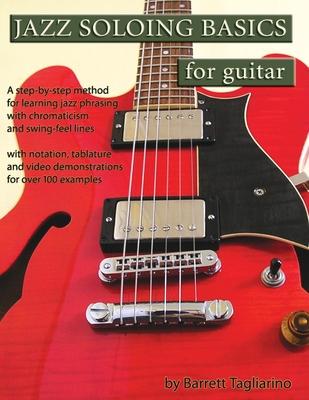Jazz Soloing Basics for Guitar
A step-by-step method for learning jazz phrasing with chromaticism and swing-feel lines
This book explains how you can train yourself to compose and improvise solos over standard jazz chord progressions, with a sense of movement and swing. We'll take our time getting there, but by about Chapter 13 you'll know how to spell out the changes so well you don't actually need anyone playing chords behind you.
There will be some licks and solos to learn of course, but rather than asking you to just memorize sample solos and long licks, expecting them to soak in and come back out as fresh statements over other songs, the program shows you how to construct working lines one note at a time and very slowly at first, then apply their principles in both prepared and improvised solos as you build up the tempo with time and practice.
This means a larger investment in time and effort at the beginning but a bigger payoff in the end. The foundation you gain here prepares you to function as a professional in any style that requires improvisational soloing.
Includes:
- Handling common rhythmic feels, progressions, and turnarounds.
- Creating extended chord structures in lines.
- Incorporating blues over key centers.
- Modal and chord-scale theory.
- Correctly placing dissonant notes.
- Beginning fretboard and music theory in appendices.
- 100 examples and 15 tudes, with tab, notation and streaming video demos accessed through code included in the book.
From the author of:
Chord-Tone Soloing--also available in French, Dutch, and German
Rhythmic Lead Guitar
Guitar Fretboard Workbook--also available in Spanish, French, and German
Guitar Reading Workbook
Interval Studies and Lead Guitar Technique
Harmonic Minor, Melodic Minor, and Diminished Scales for Guitar
Music Theory: A Practical Guide for All Musicians
